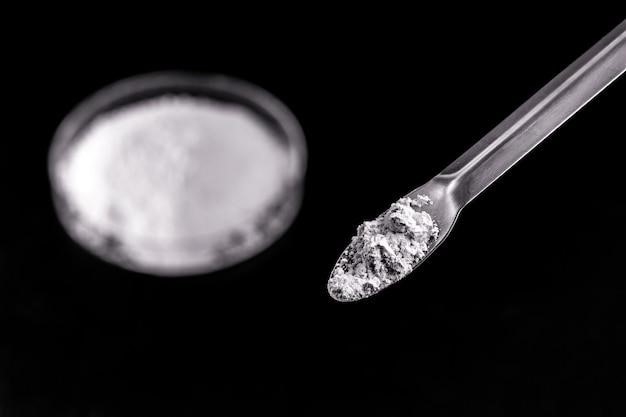
Managing Alkalinity in Your Swimming Pool: An In-Depth Guide
Swimming pools are more than just water bodies, they are complex ecosystems that require regular monitoring and maintenance. One of the critical aspects of swimming pool maintenance is managing the alkalinity levels. In this comprehensive guide, we’ll delve into what alkalinity is, why it matters, and how you can effectively lower high alkalinity levels in your pool.
What is Alkalinity?
Alkalinity is a measure of the buffering capacity of water, which helps maintain the pH level of the pool water. It absorbs the acids in the water, preventing drastic changes in pH. The recommended range for alkalinity in a swimming pool is between 80 and 120 parts per million (ppm).
Quick Tip: The most common methods for reducing alkalinity in pool water involve the use of muriatic acid or dry acid. Since both of these substances also lower pH, it may be necessary to aerate the water to restore pH levels.
The Roots of High Alkalinity
High alkalinity in pool water can often be traced back to overuse of pH or alkalinity increasers such as baking soda (sodium bicarbonate) or soda ash (sodium carbonate). While these substances are effective in elevating the pH level of your water, they also contain alkaline substances that can heighten your total alkalinity.
In addition to this, the cyanuric acid in stabilized forms of chlorine also contributes alkaline substances to the water, which can increase your total alkalinity levels.
Another potential cause of high alkalinity is the frequent use of shock treatments. However, the impact of shock treatments on alkalinity is generally short-lived.
Lastly, the water source used to fill the pool can also contribute to high alkalinity. If the water has high alkalinity, it won’t take much to tip the total alkalinity level over the recommended range.
The Risks of High Alkalinity
Although total alkalinity itself isn’t harmful for your pool, consistently high levels can trigger a series of problems. This is because the higher the total alkalinity, the harder it is to adjust your pH level. With an elevated pH, the following issues can arise:
Reduced chlorine effectiveness: Free chlorine, which is the active form of chlorine that sanitizes the water, works best at lower pH levels. Hence, a high pH can diminish the sanitizing power of chlorine, potentially leading to dirty or under-sanitized water.
Cloudy water: High pH levels can cause calcium and other minerals to fall out of solution, resulting in cloudy pool water.
Calcium scaling: When calcium falls out of solution, it settles on your pool surfaces and equipment, leading to calcium scaling, which can be challenging to remove.
Lowering Alkalinity in Your Pool
Reducing alkalinity involves using up the acid-absorbing buffer that alkalinity provides. In simple terms, you need to introduce acid into the pool water. Let’s explore two common methods to lower alkalinity in a pool.
Method 1: Using Muriatic Acid
Muriatic acid is a commonly used substance for lowering total alkalinity in a pool. It is fast-acting, effective, readily available, and relatively affordable. However, it should be handled with care due to its strong acidic nature.
Steps to Use Muriatic Acid:
- Measure your total alkalinity using a test strip or liquid test kit.
- Don your protective gear, including a long-sleeve top, rubber gloves, goggles, and a face mask.
- Fill a bucket with pool water, ensuring the amount of water is 10x the muriatic acid you will use.
- Add the muriatic acid to the bucket of water and mix the solution using a wooden stir stick.
- Pour the diluted muriatic acid into your pool, walking around the perimeter as you pour.
- Keep the pump running for at least an hour to allow the muriatic acid to circulate in your water.
- Wait a full day before testing your total alkalinity again. If it’s still high, repeat the process.
Method 2: Using Dry Acid
Dry acid, also known as sodium bisulfate, is a less dangerous alternative to muriatic acid. It’s just as effective at lowering pH and alkalinity, but it is less toxic, easier to store, and has a longer shelf-life. However, it is usually more expensive than muriatic acid, works slower, and can cause temporary water cloudiness.
Steps to Use Dry Acid:
- Measure your total alkalinity.
- Put on protective gear.
- Fill a bucket halfway with pool water.
- Add the dry acid to the water and mix until it’s fully dissolved.
- Pour the diluted dry acid into your pool, walking around the perimeter as you pour.
- Run the pump for at least an hour to circulate the acid throughout your pool.
- Retest your total alkalinity the next day. If it’s still high, repeat the process.
Restoring pH Level Without Increasing Alkalinity
Both muriatic and dry acid can lower your pH level along with your total alkalinity. If your pH falls below 7.2 after adding acid, you’ll need to raise it again without increasing your alkalinity. This can be achieved by aerating the water, which infuses it with oxygen, removes carbonic acid, and raises pH in the process. You can enhance aeration using water features such as scuppers, bubblers, and waterfalls, or simply by using the pool more frequently.
Conclusion
High total alkalinity in a pool can be caused by excessive use of pH or alkalinity increasers, cyanuric acid content from stabilized chlorine, or regular shock treatments. High alkalinity makes it challenging to maintain pH levels, leading to issues such as reduced chlorine effectiveness, cloudy water, and potential calcium scaling. However, with the right use of muriatic acid or dry acid, you can effectively manage your pool’s alkalinity levels.
Remember to always handle pool chemicals with care and adhere to safety guidelines for a safe and enjoyable swimming experience.




